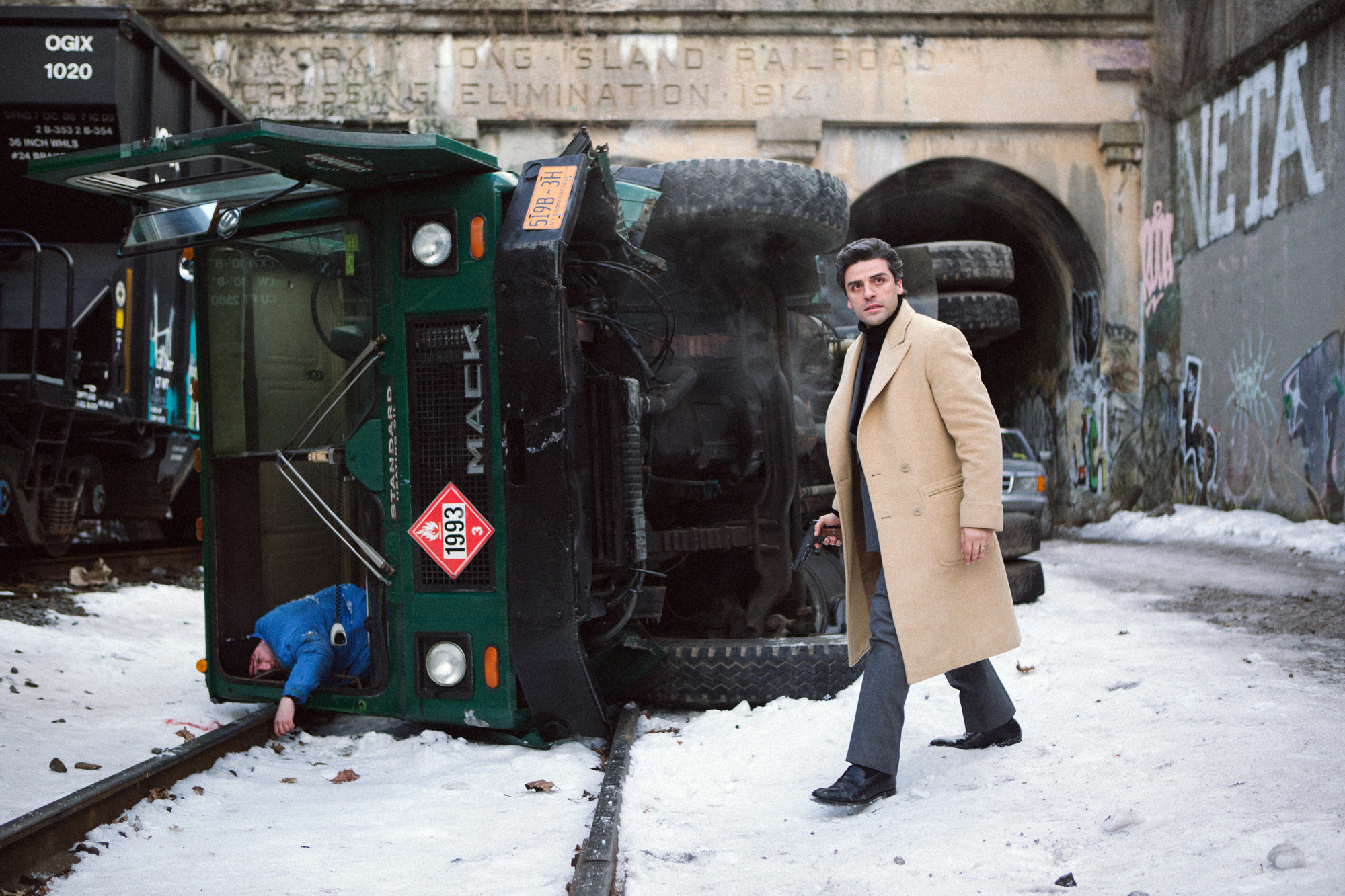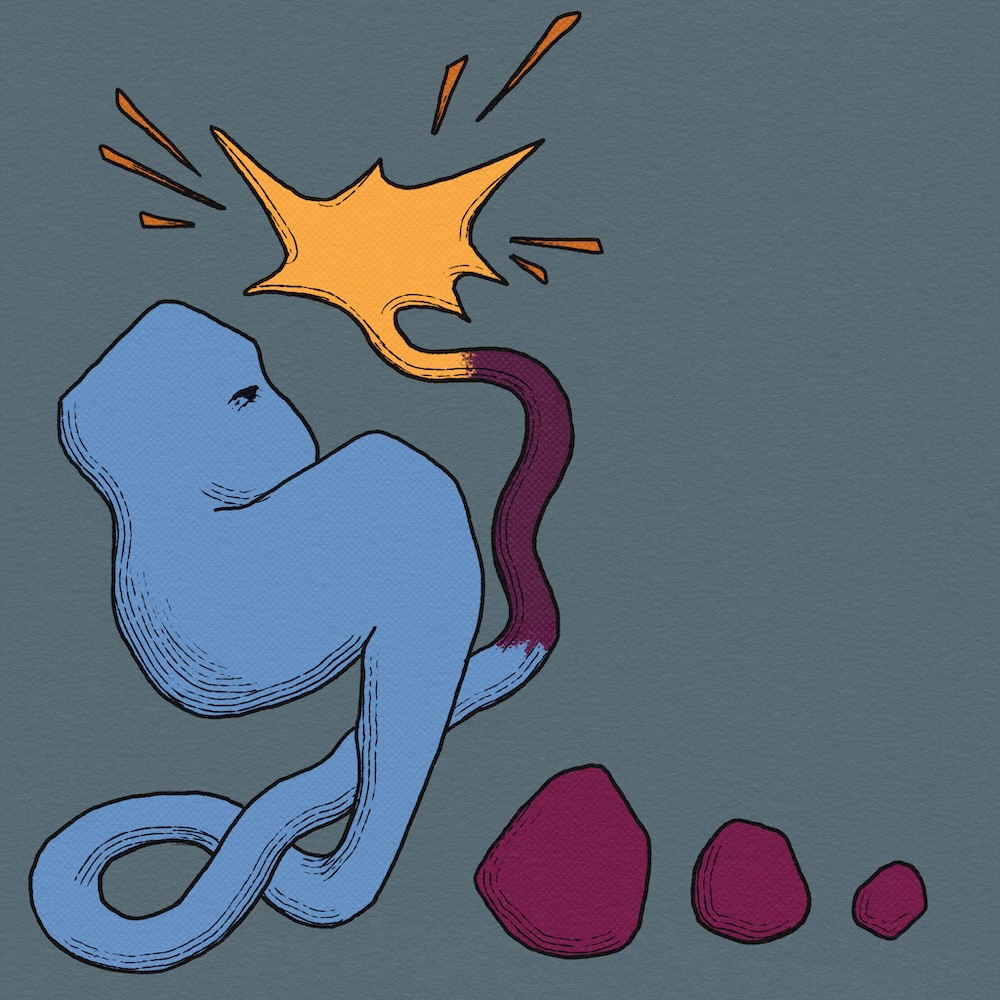What Would Jc (Chandor) Do?

New York, 1981.
The city is in its prime.
Hip-hop is still in its infancy, each new 12” stretching the boundaries of the genre; graffiti is the burgeoning artform, springing up on subway trains and derelict street corners everywhere, its artists moving from trains to galleries; The Clash are causing riots on Times Square, itself a sleaze-ridden, junkie-dwelling mix of sex shops and seedy grindhouse cinemas; public access cable TV is opening up the airwaves to all kinds of club kids and weirdoes; clubbing in the city is in its prime – the Paradise Garage is in full flow, the Mudd Club and Danceteria are coming into their prime, all soundtracked by the death throes of disco, mutating into proto-house records, taking in influences from punk and new wave, nascent rap, primitive sequencers and more. Over there A Certain Ratio are recording their debut album, being supported by Madonna, paying for ESG’s studio time (where they recorded Moody and UFO, among others, for the fledgling 99 Records imprint).
Perhaps the aforementioned Clash gigs, a lengthy enforced residency at Bond’s Casino after show were oversold and then shut down by the fire department, best exemplify the melting point that was the city in 1981: supported by everyone from arch dub fiend Lee Scratch Perry, to hip hop outfits Grandmaster Flash and The Furious Five and the Treacherous Three, with both New York and London punk funkers such as ESG, Bush Tetras and ESG all represented too. The Magnificent Dance dub of their own entry into the rap game, Magnificent Seven, was being played out at clubs, Futura was designing sleeves, appearing in promos with them (for Radio Clash) and saw out the year not just recording a single with them as his backing band, but also by painting backdrops during their European tour and Bonds-like London residency at the Lyceum (I saw them for the first time as a fresh-faced teenager on October 20 at said gigs, but that’s a different, life-changing story for another day).
But it wasn’t all fun and games, charging around the city, doing blow, smoking grass, watching Fulci films like The Beyond at 42nd street cinemas and seeing Strummer and co play live before heading to a club where Afrika Bambaata and chums were appearing, with Madonna running the coat check.
It was also the most violent year in New York’s history, with the 12 month all-time crime high, with robberies and attacks hitting record levels proving to be the tipping point of the subsequent clean-up of the streets.
And that’s where film director JC Chandor comes in. Still a relative novice helmer, in only his third feature outing, A Most Violent Year (do you see what he did with the title there) is based in New York in 1981.
It’s Clash free, sure, but the film, not as brutal as its title suggests, yet every bit as hard-hitting, is still as 1981 as it gets; its tale of corruption, beatings and, er, heating oil (it does for the substance what Tom Hardy starred Locke did for cement) is ires in what the city was during those 12 months.
“It was an incredible time, totally transformational,” says Chandor, promoting the current UK DVD and Blu-ray release of his third film, which follows in the wake of the excellent Margin Call and All Is Lost. ”Violence was all over the city and there are all the ramifications that go with that and it kind of became a self-fulfilling prophecy – property values plummeted, people were leaving the city, there was a mass exodus and it left tremendous issues in its path.”
It was, he adds, a city at the crossroads, with the choice being to either clean itself up and take a “different direction” or, otherwise, its residents would have had to arm themselves a la Wild West.
And yet, as Chandor notes, there was more to it. “There was this tremendous social awakening, with rap music being invented 15 minutes rom where this movie takes place.It was amazing. There was this explosion of creativity often happens in the wake of tremendous tragedy.”
The film follows heating oil boss Abel Morales (Oscar Isaac, in yet another belter of a role) and his wife Anna (Jessica Chastain) as they struggle to expand their business in a corrupt, crime-ridden market.
The sense of detail, from the outfits through to the graffiti on trains and walls, is spot-on. “It’s really good clothing, a natural fit for a film,” concedes Chandor, before adding: “I’m not not making light of it here, but it’s not that hard to get it right. Getting details right takes a tremendous amount of work.
but you do it in a very short period of time and have hundreds of people came together, [to make it happen], to help tell a story.
“Why wouldn’t you make it as good as possible? It can bog a story down and get in the way. Your job is to find that balance.”
It is, I suggest, one of the few films that credits, among other things, a graffiti consultant. “That was a really neat by-product of what we were able to do,” he laughs. “There are artists from that period who are still working artists, they were young kids when the movie was made. We did a lot of research for the film. There was that beautiful street photography that was invented at the time, photographers coming back from Vietnam, with a a new way of looking at things, it merged with this news coming out of art school. There was this journalistic, voyeuristic art form, naturalistic, it was an insane backdrop of the city in decline.”
While prepping the film, Chandor and his cinematographer Bradford Young went off and did their own research, some 15 of the 40 images each selected were, he says, “identical”. “Graffiti art was a massive part of this, artists were using any canvas they could, for any cry of help or injustice.”
As well as working with some of the original artists, digital technology meant they could just add graffiti onto scenes in post-production. “We could find this guy, option their work and superimpose it into blank canvases we had. We had a perfectly shiny new New York and then superimpose graffiti [on it].
“We all got a little silly,” he adds, “we started graffiti-ing things and superimposing our tags.”
The film is as much a homage to films of the 1970s as it is a homage to 1981 graffiti, informed also by older gangster films set in the city. “I’m playing off 1930s gangster films that were reinvented in the 1970s… a lot of tropes were reinvented in the 1970s. I’m playing 1930s gangster films, Sidney Lumet-style social justice, playing off the memories of those films a bit.”
Chandor was keen to avoid pastiche in his search for authenticity, aiming for the proper colour palette of the period (“browns and maroons” he says), while also getting other details right, such as bricked up windows. Sorry, what? we venture. Bricked up windows?
“Frankly in New York heating oil was expensive,” he notes, “which is why this guy is making money. People couldn’t afford big windows, so they had to brick up the windows.”
It looks a treat on Blu-ray as it did at cinemas. The release also gives a wider audience a chance to see the film. It arguably got lost in the awards season rush, with a notoriously packed schedule making it hard to make itself heard among other Oscar friendly films. That it was ignored by many awards ceremonies in terms of not just gongs but nominations must rankle.
But Chandor is nothing if not philosophical. After getting a nod for his debut, Margin Call, about stockbrokers and the financial crash (his dad was one), his sophomore film, All Is Lost, featuring a virtuoso performance from Robert Redford, was ignored after the star refused to do a performing monkey routine to get the nods. “He didn’t really want to go out and lobby for it, shaking hands,” explains Chandor. “I’d probably have loved him for it, would have made my life easier, but Robert Redford is the reason that movie works.
“The movie gets to live on whether it gets nominated or not. I look back at my favourite films, majority didn’t [win awards]. So while he feels sorry for Chastain and Isaac, both unfairly ignored he knows that, as he states, he worked with great actors who improved the film.
But, as our conversation draws to a close having run over its allotted time, it’s time to return to New York and 1981. The city is now a completely different place from 1981 (I went six years or so either side of 1981 and the difference from 1975 to 1987 was incredible, now it’s an entirely different proposition). Has it changed for better or worse?
“From a safety standpoint it has,” he notes. “It’s very easy to look back with rose-coloured glasses. My father came into New York every day, if we went to to visit him, it was in a very safe way.
We’d go to to a very specific place because others weren’t safe.
“It’s certainly easy to gloss that over. But New York, and four or five other cities, have become global places for capital, with such a concentration of it. The city has a problem. The barrier for entry is too high. The city can’t just become this ghost city of apartments that no one lives in. It’s certainly challenged itself with that now. It should be a place of commerce and a place of ideas coming together. We need to try and make this place [happen],
Although, as he concludes, “New York is still fantastic.”
• A Most Violent Year is out now in the UK on DVD and the Blu-ray they have these days.
trailer
Recommended supplementary viewing: Downtown 81
The Clash in New York, Bond’s, 1981…


















Must Reads
David Holmes – Humanity As An Act Of Resistance in three chapters
As a nation, the Irish have always had a profound relationship with the people of Palestine
Rotterdam – A City which Bounces Back
The Dutch city is in a state of constant revival
Going Remote.
Home swapping as a lifestyle choice
Trending track
Vels d’Èter
Glass Isle
Shop NowDreaming
Timothy Clerkin
Shop Now